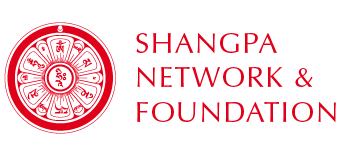[From Jonang Foundation]
Classifying the Tibetan Traditions
Among the many contemplative systems, scholastic methodologies, and esoteric instruction lineages that were transmitted from Indian Buddhist masters onto their Tibetan successors, there are 2 basic categories that define the Tibetan Buddhist traditions historically:
- Nyingma (“ancient,” rnying ma)
- Sarma (“new,” gsar ma)
The pre-Buddhist indigenous Bon make up a third separate category of Tibetan religious tradition.
The Nyingmapa sustain the knowledge transmitted during the Tibetan imperial period from the 8th to the 9th century. This era is known as the “early dissemination” (snga dar) or the initial period when tantras were translated from Sanskrit into Tibetan. During this time, the ancient tantras (rnying rgyud) were brought to Tibet, arranged and translated under the direction of the Tibetan King Trisong Deutsen, the Indian Abbot Shantarakshita, and the Master from Uddiyana Padmasambhava. Though this early translation tradition of Buddhism in Tibet was attenuated in the 10th century, the Nyingmapa continue on to today.
The Sarma traditions of Tibetan Buddhism originated during the late 10th century. The various cycles of tantras, commentaries, and meditation guidance texts that were translated during this later dissemination (phyi dar) of Buddhism in Tibet are known as the “New” traditions. Although there were a great variety of Buddhist traditions that took shape in Tibet from the 10th through the 13th century, the five primary later or new translation period traditions are:
- Sakya (sa skya)
- Marpa Kagyu (mar pa bka’ brgyud)
- Shangpa Kagyu (shang pa bka’ brgyud)
- Jonang (jo nang)
- Geluk (dge lugs)
Sakya Monastery was established in the year 1073 by Kontan Konchok Gyalpo (1034-1102), making it the earliest of these four Sarma traditions. Milarepa’s (1040-1123) close disciple Gampopa (1079-1153) later founded Gampo Mountain Monastery, commencing the Kagyu tradition in the year 1121. Then, in 1294, Kunpang Thukje Tsondru (1243-1313) arrived in Jomonang, giving rise to the Jonang tradition. More than a century later, in 1407, Je Tsongkhapa Lozang Drakpa (1357-1419) reinterpreted the existing Kadam tradition and founded Ganden Monastery in the highlands of Central Tibet, initiating what is today known as the Geluk.
In addition to the Nyingma and the four major surviving Sarma traditions, there were minor practice lineages such as:
- Zhalu (zhwa lu)
- Orgyen (o rgyan)
- Bodong (bo sdong)
- Kadam (bka’ gdams)
While these and numerous other traditions existed in Tibet during the later translation period, many of these early practice lineages of Buddhism did not survive as autonomous traditions in Tibet. Although some such as the Zhalu and Bodongpa have survived in isolated cases, most of the guidance texts and meditation techniques from these minor traditions were assimilated into and preserved by the four major living Sarma traditions of Tibetan Buddhism.
The Eight Traditions (the “Great Chariots”)
In an effort to organize the multiple major and minor Tibetan Buddhist traditions according to a succinct typology, the 19th century synthesizer and leading figure in the Rime (ris med) eclectic movement, Jamgon Kongtrul (1813-1899) compiled a text titled The Treasury of Guidance Instructions (gdams ngag mdzod). As one of his Five Treasuries (mdzod lnga), The Treasury of Guidance Instructions arranges the practice lineages (sgrub brgyud) of Buddhism in Tibet into “Eight Great Chariots” (shing rta chen po brgyad). These eight are:
- Nyingma (rnying ma)
- Kadam (dka’ gdams)
- Sakya (sa skya)
- Marpa Kagyu (mar pa bka’ brgyud)
- Shangpa Kagyu (shangs pa bka’ brgyud)
- Zhije (zhi byed) and Chö (gcod)
- Six-fold Varjrayoga (sbyor ba yan lag drug)
- Approach & Accomplishment of the Three Vajras (rdo rje bsnyen sgrub)
The Shangpa Kagyu lineage is one of the Tibetan tradition’s eight practicing lineages. The four great schools are generally well known: Nyingma, Gelug, Sakya and Kagyu. The classification of the eight practicing lineages is generally less well known. The latter are lineages of transmission of particular bodies of teachings and practices, transmitted from master to disciple since their origin. Historically, some of these lineages converted themselves into institutions and gave birth to the four great schools. Others, such as the Shangpa lineage, remained more diffuse but are nevertheless still completely alive today.
These eight lineages are : Nyingma, Kadampa (that became the geluk school), Lamdre (that became the Sakya school), Marpa Kagyu, Shangpa Kagyu, Chö (Padampa Sangye and Machik Lapdrön), Jordruk (Jonangpa Kalachakra), Dorje Sum (the Great Orgyenpa Rinchenpal).
